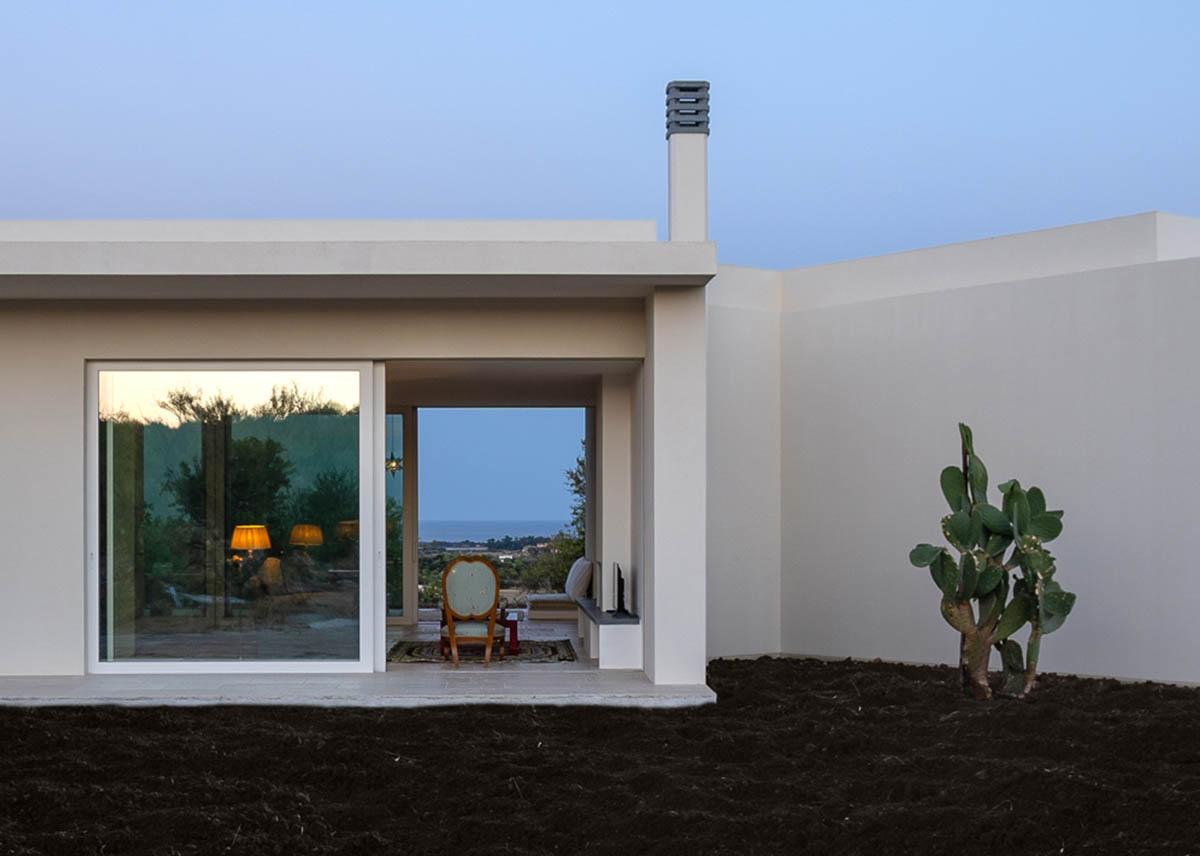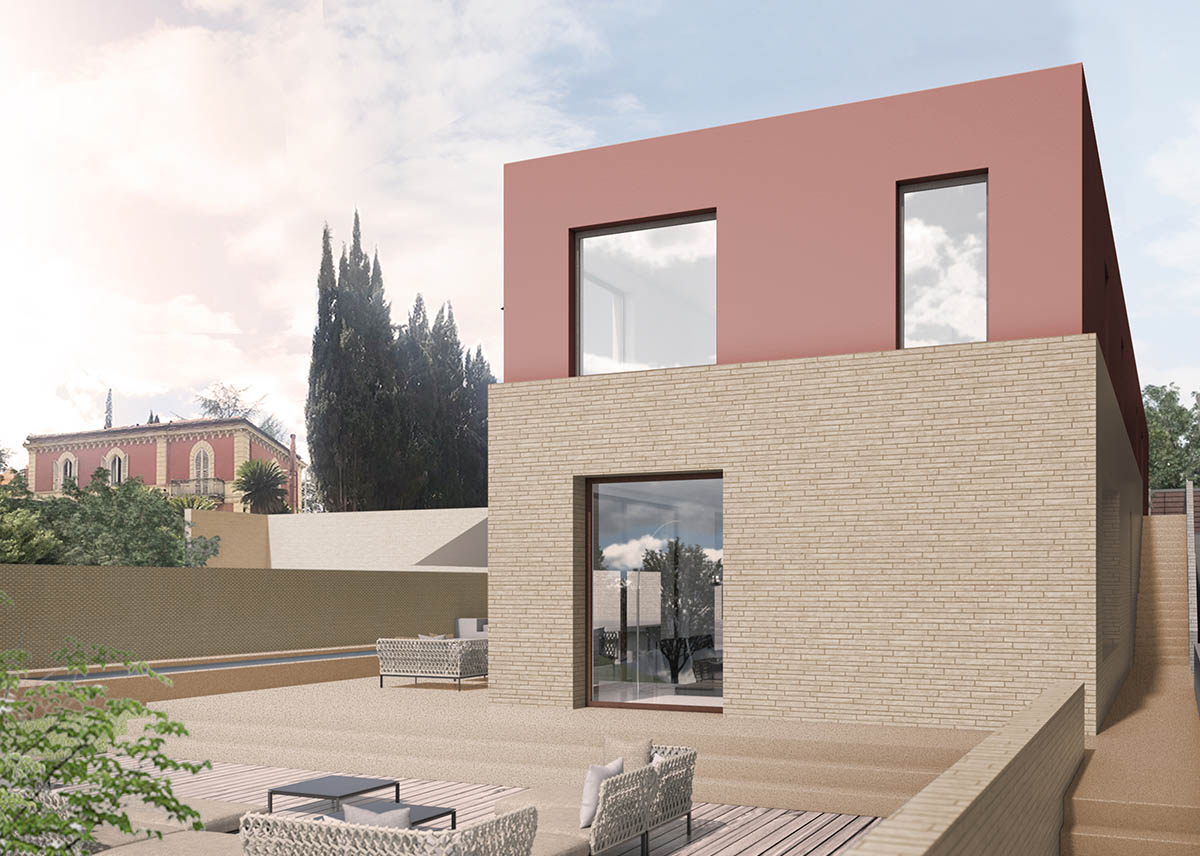Apartment in Prati

The design of this apartment in Rome is focused on the flow of circulation and natural light.
The aim is to create clarity and visibility with the use of transparent internal walls, and at the same time maintain a sense of dynamism and surprise. Local craftsmen created built-in joinery throughout, with the utmost attention to detail.
Apartment in Prati
Prati, Rome, Italy
2016

This unusual London house is part of a converted Victorian school. The accommodation is on three levels, with the common spaces on the ground floor and the bedrooms above. The main challenge was to bring light into the centre of the floorplan, once part of a long corridor serving classrooms either side.
The solution was to move the vertical circulation into the centre of the building, creating a full height void flooded with natural light. The resulting freed-up area was turned into a generous studio or spare bedroom. This room benefits from a large window and is closed with a glazed partition so that it further contributes to illuminating the core of the house.
House in Battersea
Battersea, London, UK
2008
House in Battersea

This project entailed the conversion of three flats into a single five-storey house. The main challenge in such a house is that of vertical circulation. It was important that moving from floor to floor was a beautiful experience that didn’t feel overwhelming or unpleasant.
We enlarged the stairwell to introduce a void in the middle, providing importance and grandeur to the stair and allowing natural light to travel all the way from the roof to the basement. The sinuously sculptural nature of the stair adds an element of fun and pleasure to the experience.
House in Dartmouth Park
Dartmouth Park, London, UK
2009
House in Dartmouth Park

This villa sits in a hilly almond grove next to the Vendicari nature reserve. Striking colours, perfumes and sounds complement the astonishing 360 degree views.
The house fits the landscape, gently adjusting to the levels of the site. From afar it looks like a cluster of simple volumes, and up close it is a patio house entirely dedicated to the perception of the landscape, in a constant exchange between indoor and outdoor. The villa celebrates Sicily in every aspect of its being, from the layouts to the use of traditional materials, construction techniques and colours.
House in Noto I
Noto, Syracuse, Italy
2017
House in Noto I

This project is entirely dedicated to the landscape. Double aspect fully-glazed facades allow the landscape to saturate the public areas of the house. This perception is driven by the orientation of the building in relation to the sea view and the sunset and the desire to celebrate both.
The accommodation is divided into two volumes. The volumes are juxtaposed and shifted in order to achieve privacy and a sense of flow. Meanwhile the main entrance is emphasised by the exaggerated perspective of the diagonal walls.
House in Noto II
Noto, Syracuse, Italy
2018
House in Noto II

This project – the result of a collaboration with Italian architect Flavio Albanese – saw two artists’ studios converted into a penthouse apartment. Central to the design are the two magnificent windows at the front of the living space and the vaulted double height space.
The requirement was to enhance and reinstate the generous proportions of the original rooms, which were compromised by the introduction of a mezzanine level. The solution is cleverly achieved, without losing any floor area, by the introduction of lightweight mirrored panels on the vertical and horizontal partitions of the mezzanine.
House in Notting Hill
Notting Hill, London, UK
2012
House in Notting Hill

This project is located on the Via Cassia, part of the original infrastructure of ancient Rome. Central to the design is the intention to fit into the site with character and style while celebrating its history.
The site’s main characteristic is a steep slope. The elongated volume is pinned into the land creating a structural and architectural bond with it. The accommodation is on two levels, with the bedrooms on the first floor and the common areas at garden level, alongside a long pool. There is an additional basement level with parking and plantrooms. The facade at garden level is clad with a Roman-style brick wall that wraps around the whole building and blends into the main retaining wall across the site.
A neighbouring late 19th century villa is a significant addition to the site. The relationship between the two sites is enhanced by the use of matching coloured render and the integrated element of the retaining wall.
House in Ponte Milvio
Rome, Italy
On Site
House in Ponte Milvio

The aim of this project was to enhance the relationship between the house and the garden. A new glazed volume – a side and rear extension – acts as a junction between those two elements.
It was important to avoid compromising or overwhelming the proportions of the existing building. In response, the roof slopes parallel to the length of the house rather than perpendicular to it.
House in Queens Park I
Queens Park, London, UK
2010
House in Queens Park I

This Victorian terraced house in northwest London has been transformed by turning the layout around: the kitchen and dining room are in the front of the house and the living room faces the rear garden.
This swap from the typical terraced house arrangement allows better exploitation of space: The living area is square and wide, the dining area is rectangular, while the kitchen is circular and at the core of the house. The living room has been extended with the introduction of a frameless glazed box which leaves the original house and the garden completely unobstructed. This solution allows the retention of the Victorian character of the building, enhances its most attractive features and maximises natural light.
The project includes a loft conversion and the addition of a new stairway: the key aspects being natural light, the generosity of the proportions and a sense of the flow throughout the entire house.
House in Queens Park II
Queens Park, London, UK
2017
House in Queens Park II

Situated in the unspoilt Sabina region, 100km north of Rome, the peculiarities of this hilly site include lush vegetation and the ruins of a previous structure. The project uses the floor area of the derelict construction to build a two bedroom house with a pool.
The small floor plan is enriched with the introduction of a loggia, a sort of conservatory that can be enclosed to form part of the floor plan or can be opened up and used as a patio. An historical link is maintained by using the original blockwork of the ruins as cladding for the walls of the new construction.
House in Sabina
Collevecchio, Rome, Italy
Planning
House in Sabina